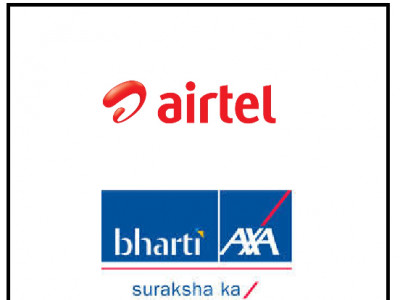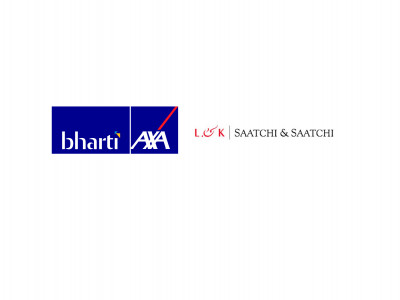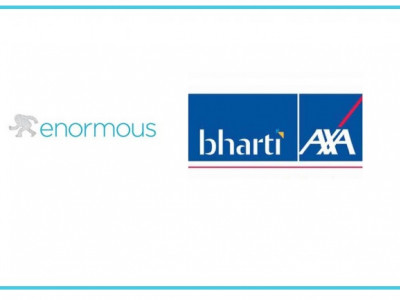Youth have become very critical for the insurance sector: Upendra Namburi
With India’s insurance market expected to quadruple in size over the next 10 years from its current size of US$ 60 billion, Bharti AXA General Insurance, a private sector general insurer, is leaving no stone unturned in pushing itself towards the top by undertaking various initiatives in the domain. The general insurance business in India is currently valued at Rs 78,000 crore (US$ 11.44 billion) premium per annum industry and is growing at a healthy rate of 17 per cent, as suggested by various reports.
Bharti AXA General Insurance is a joint venture between Bharti Enterprises and AXA, a world leader in financial protection. The joint venture company has a 51 per cent stake from Bharti and 49 per cent stake of the AXA Group. The organisation commenced national operations in August 2008 and currently has 87 branch offices across the country. Since its inception,, the company went to launch several schemes and profitable policies, thriving to stand apart. Also, giving a boost for women empowerment, Bharti AXA General Insurance recently announced their plan to launch products focused on women in Small and Medium Enterprises (SMEs).
In conversation with Adgully, Upendra Namburi, Chief Innovation and Marketing Officer, Bharti AXA General Insurance, shares some insights on the factors driving the company’s marketing strategies, growing digitisation and changing communication dynamics in the general insurance sector, demonetisation and more. Excerpts:
What are the factors driving Bharti AXA General Insurance’s marketing strategies?
At Bharti AXA General Insurance we try to figure out what customer needs are with a lot of research and deliver propositions which include features, segments, etc. We work on the development of a proposition, to improve our engagement with customers on the right product in the right manner. Creating a customer centric brand is our motto by delivering relevant propositions for customers by making it simple and understandable. We also deliver products through agents and digital partners and are able to effectively sell the proposition across different channels. The most critical aspect of the journey is the claim aspect – we are making it clear and relevant by creating awareness about our products through TV, radio, outdoor, digital.
Please give some examples of past activities.
Bharti AXA General Insurance recently launched Long-term two wheeler policy which allows motorists to renew their insurance once in three years.
Very few two-wheeler owners renew their insurance. They need to be made aware that it is not only beneficial to them, but also mandatory by law. It is a legal mandate, but this policy also protects the consumer. According to the poll that we conducted, we found that people do not renew their insurance mainly because it is difficult to do it annually. So essentially, we have introduced a policy for three years, compared to other two-wheeler policies, which have a one-year cover. It is a convenience as well as financial benefit for a consumer. This is how we approach a proposition and market it. To create awareness for this, we have created some communication, including a video where we are playing on that emotional nuance and highlighting to the customer that this makes their life simpler and renew once and forget for 3 years. From a delivery standpoint, we started opening out to select channels, but we usually have a lot of scale on direct channel which is digital and is growing rapidly. We sell through partners and digitally and we are doing a lot of things to make customer purchases much simpler for two- or four-wheelers. We also plan to launch a website.
Will it be a revamp?
This is just different from what the other players are doing in the market. The designed websites are made largely keeping the mobile consumer in mind. This is just the start of the journey and many more things are coming up.
How is digital changing the whole communication strategy?
Designing communication for a consumer who leads his life using digital channels is very different from making a digital campaign. It doesn’t start with only a communication or end with it. Digital is about creating awareness, transaction and servicing the entire consumer lifecycle. Creating conversation is important as it is not only about brands telling the consumers, but also engaging with them and creating new avenues for them – be it on social media, getting feedback, etc. We use it from a display search performance which is standard. But we also started looking at the video in fair amount to create awareness, customer interaction, post purchase (servicing, feedback).
We are also looking at digital as an enabler for non-digital channels. For agents and brokers, we are looking at how content is provided to them digitally so that they work in a better way. We are making a lot of investments in inverting customers on digital channels.
Earlier, there was the concept of only talking about the product in advertising, but now people are moving towards storytelling in their communication. How does it help differentiate the brand?
Advertising has been about storytelling since a long time, but yes, it was limited to only the product. We want to aim at customer stories which are not fictionalised. We are trying to get customers to share their stories with us. We have also shared a customer story, which shows how she met with a minor accident and how the entire claim process worked out and we actually got a feedback for it. Stories show transparency. Globally, AXA is a huge believer in transparency, which is also seen in our social channels like Facebook and Twitter. There is a fair amount of engagement with the youth across different platforms. We are looking for more such opportunities more robustly than any other insurance player.
What are the growth markets that you are targeting?
Geographically, we are an all-India player, we operate across India.
Consumer segment wise, we cater to three broad segments – retail individual, self-employed and commercial or corporate.
Category wise, a lot of our success has been in four-wheeler and two-wheeler categories and commercial.In the near future, one can expect much more focus on health and lifestyle aswe are looking for product offerings in this sector.. We are also looking at home and travel, since travel is growing exponentially and purchase of homes is also becoming crucial.
Are there any campaigns in place?
We have had a dedicated claim handler campaign, which we have run for a few seasons. It is a property of ours which is a service offering, where during a claim a customer is assigned support throughout the claims process for a smoother claims experience. There is another campaign that should be around the corner next year. The propositions and benefits which we will share in that campaign will redefine insurance business in India.
How is demonetisation impacting the insurance industry as a whole?
The impact is marginal. There are very limited cash transactions happening in this business. In the insurance policy if you see the ticket size, an average four-wheeler insurance will cost you around Rs 8,000-Rs 10,000, which is taken by cheque. When you see purchases or transactions in insurance, there is no direct impact. In agriculture insurance, some farmers have faced the challenge of getting their crop insurance claim because the ticket size is small working in rural areas. Singular discussion on demonetisation is incomplete because the design is one step in the direction of exerting a few things keeping its success or failure aside. The results of this policy are dependent on other intervention and actions.
Do you think insurance sales might be using low value investments?
One needs to distinguish life and general insurance. Life insurance also has other products like term insurance according to wallet share as far as investment and sharing is concerned. General insurance in case of motor vehicles is a legal requirement, while in other categories it is a customer’s choice. But consumers are evolving rapidly, where orientation and need for protection and assurance for continuity is maturing. This is going to go rapidly and not because insurers are pushing for it, but because consumers understand the need for it. Heath insurance is an example where customers buy because of tax benefits, but there are other sets of customers who primarily buy it because they believe that the value of life is extremely important. With increasing cost of health and other diseases, it is very important.
What are the challenges and opportunities for the general insurance industry in India at this point of time?
Opportunities:
- General insurance operates in multiple spaces like, retail individual, SME and corporate
- Rise in income levels, education which makes people understand the need for protection
- Increasing cost of healthcare which leads to the need of having an insurance cover
- The penetration levels are still low. The sheer penetration opportunity itself is a growth opportunity
Challenges:
- Firstly, it has been a push-category till now which means the insurer is making a greater effort in selling the insurance. The challenge is, how do you create a pull through awareness and education.
- Secondly, since there is a shift in consumer lifestyles, the challenges are in terms of understanding and addressing the consumer shift. We have to simply our approach and make it more appealing to consumers
- Third is experience, which should be relevant, simple and transparent
How challenging is it to grab the attention of consumers to take insurance or is there a shift in that trend?
Youth who are taking health insurance are single. Most of the two-wheelers are driven by youth, they take the decision. Youth is also increasingly travelling abroad, while taking an insurance policy is essential in some markets, in some, it is optional. Youth is very critical when it comes to taking insurance and hence, that market is always attractive.

















Share
Facebook
YouTube
Tweet
Twitter
LinkedIn